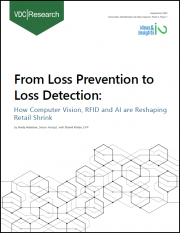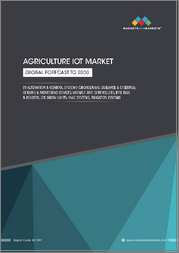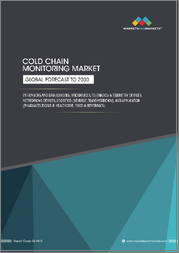
|
시장보고서
상품코드
1777248
세계의 RFID 카드 시장 : 주파수, 유형, 용도, 최종사용자 산업, 지역별(-2035년)Global RFID Cards Market Research Report Information by Frequency, by Type, by Application, by End-User Industry, and by Region Forecast till 2035 |
||||||
세계의 RFID 카드 시장 규모는 2024년 70억 240만 달러 , 예측 기간 중 CAGR 9.5%로 추이하며, 184억 5,240만 달러에 달할 것으로 예측됩니다.
RFID 카드의 예로는 기업 출입증, 지하철 요금 카드 등을 들 수 있습니다. 이 카드는 리더기와의 수동적인 무선통신을 통해 데이터를 관련 시스템에 전송하여 무현금 결제, 본인확인, 출입통제 등을 가능하게 합니다.
세계 RFID 카드 시장의 주요 성장 요인은 공급망 가시성 및 효율성 향상에 대한 니즈입니다. RFID는 자동 모니터링과 즉각적인 정보 수집을 통해 이를 실현합니다. 소매 업계에서는 RFID를 활용하여 재고 축소(도난-분실)를 줄이고 재고 정확도를 유지하기 위해 RFID를 활용하고 있습니다. 특히 식품 및 의약품 산업에서는 제품 추적성 관련 법규가 RFID의 활용을 촉진하고 있습니다. 기술 혁신으로 인해 RFID는 저렴하고 신뢰할 수 있는 기술이 되었고, 의료-제약 산업에서 의약품 및 환자 관리에 활용되어 서비스 품질 향상에 기여하고 있습니다.
반면, 중소기업의 경우 초기 도입 비용이 높다는 점이 보급의 걸림돌로 작용하고 있습니다. 또한 의료 및 결제 분야에서의 개인정보 보안에 대한 우려는 규제 대응 및 소비자 신뢰와 관련된 문제입니다. 또한 바코드, NFC 등 저렴한 대체 기술과의 경쟁도 RFID 카드의 활용 확대를 제한하고 있습니다. 개발도상국에서는 기술자 부족과 낮은 인지도 때문에 도입이 늦어지고 있습니다. 또한 세계 공급망의 혼란과 원자재 부족으로 인해 비용 증가와 RFID 프로젝트 지연이 발생하고 있습니다.
한편, AI 및 IoT와 결합하여 RFID는 스마트화를 실현하고 있습니다. 더 작고 저렴한 RFID 태그의 개발이 진행되고 있으며, 도입이 더욱 현실화되고 있습니다. 스마트 농업에 대한 적용과 신흥 시장의 확대도 진행 중으로 향후 수년간 RFID 시장은 큰 성장 잠재력을 가지고 있습니다.
지역 분석
북미는 첨단인 기술 생태계, 비접촉식 결제의 보급, 엄격한 보안 기준을 배경으로 세계 RFID 카드 시장을 선도하고 있습니다. 의료 분야에서는 RFID 팔찌와 ID 배지가 환자 관리와 업무 효율성 향상에 기여하고 있습니다.
유럽은 성숙한 시장이지만 런던, 파리, 베를린 등 도시의 교통 시스템을 중심으로 RFID 활용이 확산되고 있습니다. GDPR(EU 개인정보보호규정)과 안전한 데이터 관리에 대한 관심이 높아지면서 지역내 수요가 증가하고 있습니다.
아시아태평양에서는 스마트 교통 인프라 구축이 RFID 활용 확대의 배경이 되고 있습니다. 지하철과 버스에서 이용이 확산되고 있으며, 특히 중국, 일본, 한국에서는 가전제품과 의류 소매업의 재고 관리에 RFID가 활용되고 있습니다.
라틴아메리카에서는 브라질과 멕시코가 디지털 뱅킹과 국민 신분증 제도에 대한 투자를 진행하고 있으며, 도시 교통과 비접촉식 결제에 RFID 도입이 증가하고 있습니다.
중동 및 아프리카에서는 GCC 국가들의 스마트 시티 구상이 추진력이 되고 있으며, 석유-가스 분야의 자산 추적, 병원의 환자 식별 시스템, 현금 없는 결제 기술 등에 RFID가 활용되고 있으며, 향후 성장이 기대되고 있습니다.
세계의 RFID 카드 시장을 조사했으며, 시장의 정의와 개요, 시장 성장에 대한 각종 영향요인의 분석, 시장 규모 추이·예측, 각종 구분·지역/주요 국가별 내역, 경쟁 환경, 주요 기업의 개요 등을 정리하여 전해드립니다.
목차
제1장 개요
제2장 시장 개요
제3장 조사 방법
제4장 시장 역학
- 촉진요인
- 공급망 가시성과 효율성에 대한 수요 증가
- 소매업에서 재고 관리의 도입 증가
- 법령 준수와 제품 이력추적 요건
- RFID 시스템의 기술적 진보
- 의료 및 의약품 용도의 확대
- 억제요인
- RFID 도입의 높은 초기 비용
- 프라이버시와 데이터 보안에 관한 우려
- 대체 기술과의 경쟁
- 의식과 숙련 노동력의 부족
- 공급망 혼란과 원재료 부족
- 기회
- IoT 및 AI 기술과의 통합
- 스마트 농업 용도의 성장
- 보다 소형·적정 가격 태그의 개발
- 신흥 시장으로의 진출
- COVID-19의 영향 분석
제5장 시장 요인 분석
- 공급망 분석
- Porter's Five Forces 모델
제6장 세계의 RFID 카드 시장 : 유형별
- 패시브 RFID 카드
- 액티브 RFID 카드
제7장 세계의 RFID 카드 시장 : 주파수별
- 저주파(LF)
- 고주파(HF)
- 극초단파(UHF)
제8장 세계의 RFID 카드 시장 : 용도별
- 액세스 제어
- 결제·거래
- 식별·인증
- 재고 관리
- 운송·물류
제9장 세계의 RFID 카드 시장 : 최종사용자 산업별
- 정부·방위
- 헬스케어
- 소매
- 은행·금융
- 운송
- 교육
제10장 세계의 RFID 카드 시장 : 지역별
- 세계
- 북미
- 미국
- 캐나다
- 유럽
- 영국
- 독일
- 프랑스
- 이탈리아
- 스페인
- 러시아
- 기타
- 아시아태평양
- 중국
- 한국
- 인도
- 일본
- 인도네시아
- 말레이시아
- 태국
- 기타
- 남미
- 브라질
- 멕시코
- 아르헨티나
- 기타
- 중동 및 아프리카
- GCC 국가
- 남아프리카공화국
- 기타
제11장 경쟁 구도
- 시장 점유율 분석
- 경쟁 대시보드
- 주요 개발과 성장 전략
제12장 기업 개요
- ECO TRACK SYSTEMS(ETS)
- ALIEN TECHNOLOGY, INC.
- ZEBRA TECHNOLOGIES
- AVERY DENNISON
- GAO RFID
- GIGA-TMS INC.
- NXP SEMICONDUCTORS
- HID GLOBAL
- SOREX
- ZHANFENG(ZF) CARDS
Global RFID Cards Market Research Report Information by Frequency [Low Frequency (LF), High Frequency (HF), Ultra-High Frequency (UHF)], by Type (Passive RFID Cards, Active RFID Cards), by Application (Access Control, Payment and Transactions, Identification and Authentication, Inventory Management, Transportation and Logistics), by End-User Industry (Government and Defence, Healthcare, Retail, Banking and Finance, Transportation and Education), and by Region (North America, Europe, APAC, South America, MEA) Forecast till 2035
Industry Overview
Global RFID cards market was estimated to be worth USD 7,002.4 million in 2024 and is projected to increase at a compound annual growth rate (CAGR) of 9.5% from 2024 to 2035 to reach USD 18,452.4 million. Examples of radio-frequency identification cards are corporate access cards and metro fare cards. Its passive wireless communication with reader devices, which transmits data to linked systems, enables cashless payments, identity verification, and access control.
A primary driver of the worldwide RFID cards market is the need for improved supply chain visibility and efficiency, as RFID facilitates this process through automatic monitoring and instant information gathering. The retail sector utilizes RFID for effective stock management that minimizes shrinkage and maintains inventory precision. Legislative requirements on product traceability particularly in the food and drug industries are driving usage too. Innovations have rendered RFID technology both affordable and dependable while healthcare plus pharmaceutical sectors are employing it to monitor drugs as well as patients thereby enhancing service delivery.
High initial implementation costs, especially for SMEs, hinder widespread adoption. Privacy and data security concerns, particularly in healthcare and payments, raise regulatory and consumer trust issues. Competition from cheaper alternatives like barcodes and NFC further limits the use of RFID cards. A lack of skilled professionals and low awareness in developing regions delays deployment. Additionally, global supply chain disruptions and raw material shortages are increasing costs and delaying RFID projects worldwide.
The combination of RFID with AI and IoT technologies is enabling smart automation. Smaller and low-cost RFID tags are being developed, making implementation more feasible. New applications in smart farming and ongoing expansion in emerging economies are expected to unlock significant potential for the RFID market in the coming years.
Industry Segmentations
The global RFID cards market is categorized based on type into passive RFID cards and active RFID cards.
In terms of frequency, the global RFID cards market is divided into low frequency, high frequency, ultra-high frequency.
Depending on the application, the global market is segmented into access control, payment and transactions, identification and authentication, inventory management, transportation and logistics.
Government and defence, healthcare, retail, banking and finance, transportation and education are the part of end user industry of the global market.
Regional Analysis
North America remains at the forefront of the global RFID cards market, backed by advanced tech ecosystems, widespread contactless payment usage, and tight security norms. The healthcare sector leads adoption with RFID wristbands and ID badges, enhancing patient care and workflow in the region.
Europe, though mature, continues to expand its RFID footprint, particularly in transit systems of cities such as London, Paris, and Berlin. Emphasis on GDPR and secure data management bolsters regional demand.
In Asia-Pacific, smart transport infrastructure is the reason behind the rise in RFID applications. RFID is widely implemented in metros and buses, while sectors like retail, especially electronics and apparel, benefit from RFID-based stock tracking in China, Japan, and South Korea.
In Latin America, growth is steady, with countries like Brazil and Mexico investing in digitized banking and national identification schemes. RFID is also being adopted in urban transport and rising contactless transactions.
The Middle East & Africa region is advancing through Gulf nations' smart city initiatives. RFID sees growing utility in oil & gas asset tracking, patient ID systems in hospitals, and cashless payment technologies, pointing toward a growth trajectory in the region.
Key Players
Key players of the global RFID card market are Eco Track Systems, Avery Dennison, HID Worldwide, Zebra Technologies, NXP Semiconductors, GAO RFID, Alien Technology, GIGA-TMS Inc., ZF Cards, and Sorex.
TABLE OF CONTENTS
1 EXECUTIVE SUMMARY
- 1.1 MARKET OVERVIEW:
- 1.2 MARKET SEGMENTATION
- 1.3 COMPETITIVE LANDSCAPE
- 1.4 FUTURE OUTLOOK
2 MARKET INTRODUCTION
- 2.1 DEFINITION
- 2.2 SCOPE OF THE STUDY
- 2.3 RESEARCH OBJECTIVE
- 2.4 MARKET STRUCTURE
3 RESEARCH METHODOLOGY
- 3.1 OVERVIEW
- 3.2 DATA FLOW
- 3.2.1 Data Mining Process
- 3.3 PURCHASED DATABASE:
- 3.4 SECONDARY SOURCES:
- 3.4.1 Secondary Research Data Flow:
- 3.5 PRIMARY RESEARCH:
- 3.5.1 Primary Research DATA FLOW:
- 3.5.2 Primary Research: Number of Interviews conducted
- 3.5.3 Primary Research: Regional Coverage
- 3.6 APPROACHES FOR MARKET END USER ESTIMATION:
- 3.6.1 Revenue Analysis Approach
- 3.6.2 Data forecasting
- 3.6.3 Data Forecasting Technique
- 3.7 DATA MODELING
- 3.7.1 microeconomic factor analysis:
- 3.7.2 Data modeling:
- 3.8 TEAMS AND ANALYST CONTRIBUTION
4 MARKET DYNAMICS
- 4.1 INTRODUCTION
- 4.2 DRIVERS
- 4.2.1 Increasing Demand for Supply Chain Visibility and Efficiency
- 4.2.2 Rising Adoption in Retail for Inventory Management
- 4.2.3 Regulatory Compliance and Product Traceability Requirements
- 4.2.4 Technological Advancements in RFID Systems
- 4.2.5 Expansion in Healthcare and Pharmaceutical Applications
- 4.3 RESTRAINTS
- 4.3.1 High Initial Costs of RFID Implementation
- 4.3.2 Privacy and Data Security Concerns
- 4.3.3 Competition from Alternative Technologies
- 4.3.4 Lack of Awareness and Skilled Workforce
- 4.3.5 Supply Chain Disruptions and Raw Material Shortages
- 4.4 OPPORTUNITY
- 4.4.1 Integration with IoT and AI Technologies
- 4.4.2 Growth in Smart Agriculture Applications
- 4.4.3 Development of Smaller and More Affordable Tags
- 4.4.4 Expansion in Emerging Markets
- 4.5 IMPACT ANALYSIS OF COVID - 19
5 MARKET FACTOR ANALYSIS
- 5.1 SUPPLY CHAIN ANALYSIS
- 5.1.1 Raw Material Sourcing and Component Manufacturing
- 5.1.2 RFID Inlay and Card Assembly
- 5.1.3 Software Development and Card Programming
- 5.1.4 Distribution and Logistics
- 5.1.5 Deployment and End-User Application
- 5.2 PORTER'S FIVE FORCES MODEL
- 5.2.1 Threat of New Entrants (Moderate)
- 5.2.2 Bargaining Power of Suppliers (Moderate)
- 5.2.3 Threat of Substitutes (Low to Moderate)
- 5.2.4 Bargaining Power of Buyers (Moderate to High)
- 5.2.5 Intensity of Rivalry (High)
6 GLOBAL RFID CARDS MARKET, BY TYPE
- 6.1 INTRODUCTION
- 6.2 PASSIVE RFID CARDS
- 6.3 ACTIVE RFID CARDS
7 GLOBAL RFID CARDS MARKET, BY FREQUENCY
- 7.1 INTRODUCTION
- 7.2 LOW FREQUENCY (LF)
- 7.3 HIGH FREQUENCY (HF)
- 7.4 ULTRA-HIGH FREQUENCY (UHF)
8 GLOBAL RFID CARDS MARKET, BY APPLICATION
- 8.1 INTRODUCTION
- 8.2 ACCESS CONTROL
- 8.3 PAYMENT AND TRANSACTIONS
- 8.4 IDENTIFICATION AND AUTHENTICATION
- 8.5 INVENTORY MANAGEMENT
- 8.6 TRANSPORTATION AND LOGISTICS
9 GLOBAL RFID CARDS MARKET, BY END-USER INDUSTRY
- 9.1 INTRODUCTION
- 9.2 GOVERNMENT AND DEFENSE
- 9.3 HEALTHCARE
- 9.4 RETAIL
- 9.5 BANKING AND FINANCE
- 9.6 TRANSPORTATION
- 9.7 EDUCATION
10 GLOBAL RFID CARDS MARKET, BY REGION
- 10.1 GLOBAL
- 10.2 NORTH AMERICA
- 10.2.1 USA
- 10.2.2 CANADA
- 10.3 EUROPE
- 10.3.1 united kingdom
- 10.3.2 germany
- 10.3.3 france
- 10.3.4 italy
- 10.3.5 spain
- 10.3.6 RUSSIA
- 10.3.7 rest of europe
- 10.4 ASIA PACIFIC
- 10.4.1 china
- 10.4.2 South Korea
- 10.4.3 indiA
- 10.4.4 Japan
- 10.4.5 indonesia
- 10.4.6 malaysia
- 10.4.7 thailand
- 10.4.8 rest of asia pacific
- 10.5 SOUTH AMERICA
- 10.5.1 brazil
- 10.5.2 mexico
- 10.5.3 argentina
- 10.5.4 rest of south america
- 10.6 MIDDEL EAST AND AFRICA
- 10.6.1 gcc countries
- 10.6.2 south africa
- 10.6.3 rest of middle east & africa
11 COMPETITIVE LANDSCAPE
- 11.1 INTRODUCTION
- 11.2 MARKET SHARE ANALYSIS, 2024SS
- 11.3 COMPETITOR DASHBOARD
- 11.4 KEY DEVELOPMENTS & GROWTH STRATEGIES
12 COMPANY PROFILES
- 12.1 ECO TRACK SYSTEMS (ETS)
- 12.1.1 COMPANY OVERVIEW
- 12.1.2 PRODUCTS OFFERED
- 12.1.3 SWOT ANALYSIS
- 12.1.4 Key Strategy
- 12.2 ALIEN TECHNOLOGY, INC.
- 12.2.1 COMPANY OVERVIEW
- 12.2.2 PRODUCT OFFERED
- 12.2.3 SWOT ANALYSIS
- 12.2.4 Key Strategy
- 12.3 ZEBRA TECHNOLOGIES
- 12.3.1 COMPANY OVERVIEW
- 12.3.2 product OFFERed
- 12.3.3 SWOT ANALYSIS
- 12.3.4 financial analysis
- 12.3.5 Key Strategy
- 12.4 AVERY DENNISON
- 12.4.1 COMPANY OVERVIEW
- 12.4.2 PRODUCT OFFERED
- 12.4.3 SWOT ANALYSIS
- 12.4.4 financial analysis
- 12.4.5 Key Strategy
- 12.5 GAO RFID
- 12.5.1 COMPANY OVERVIEW
- 12.5.2 Product OFFERed
- 12.5.3 SWOT ANALYSIS
- 12.5.4 Key Strategy
- 12.6 GIGA-TMS INC.
- 12.6.1 COMPANY OVERVIEW
- 12.6.2 product OFFERed
- 12.6.3 SWOT ANALYSIS
- 12.7 NXP SEMICONDUCTORS
- 12.7.1 COMPANY OVERVIEW
- 12.7.2 PRODUTS OFFERED
- 12.7.3 SWOT ANALYSIS
- 12.7.4 financial analysis
- 12.7.5 Key Strategy
- 12.8 HID GLOBAL
- 12.8.1 COMPANY OVERVIEW
- 12.8.2 product OFFERed
- 12.8.3 SWOT ANALYSIS
- 12.8.4 Key Strategy
- 12.9 SOREX
- 12.9.1 COMPANY OVERVIEW
- 12.9.2 PRODUCT OFFERED
- 12.9.3 SWOT ANALYSIS
- 12.10 ZHANFENG (ZF) CARDS
- 12.10.1 COMPANY OVERVIEW
- 12.10.2 PRODUCT OFFERED
- 12.10.3 SWOT ANALYSIS
- 12.10.4 Key Strategy



















